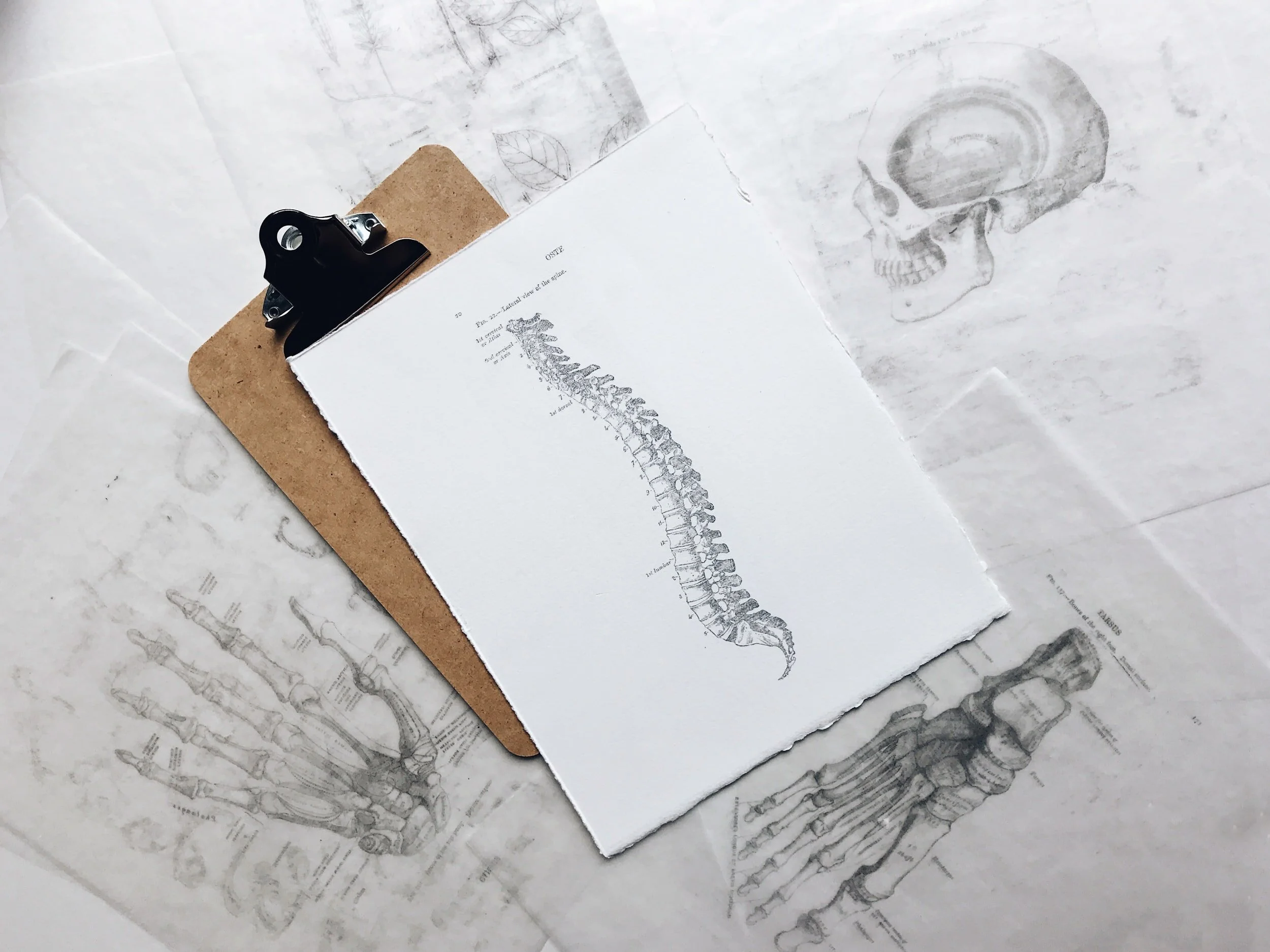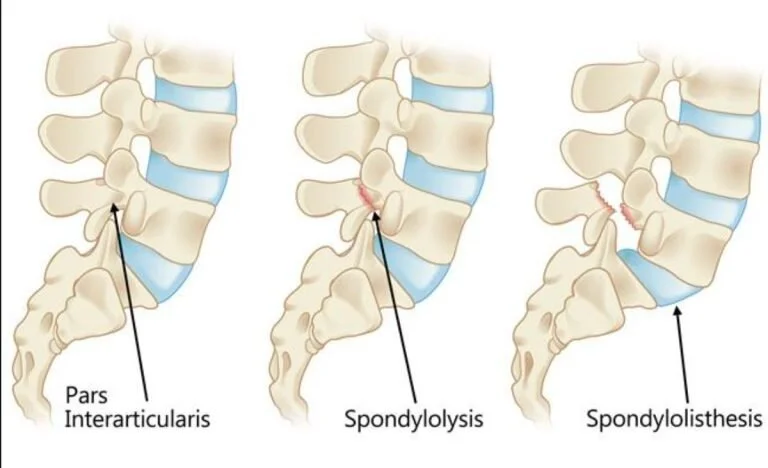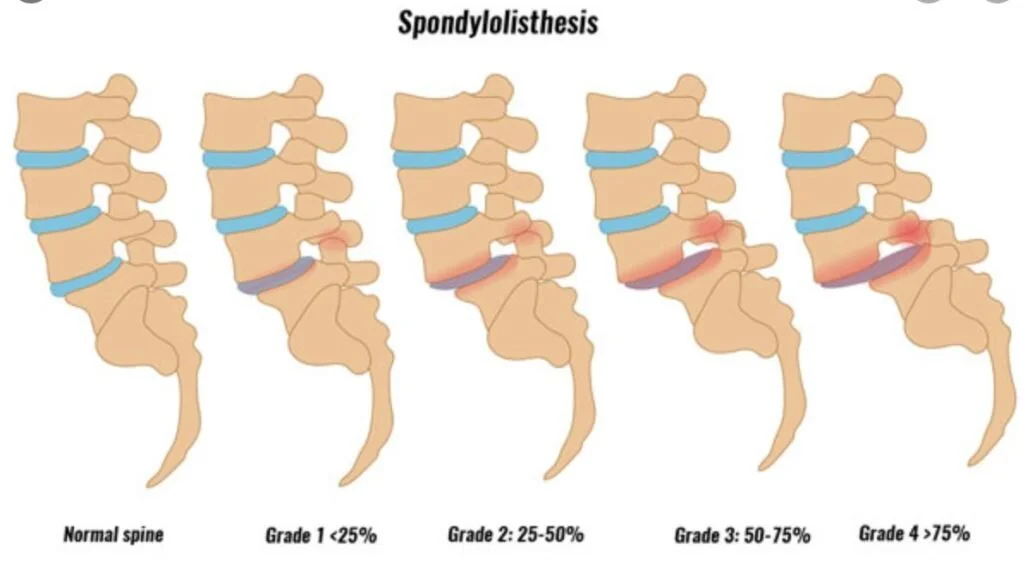Spondylosis…Spondylolithesis…spondywhat?
Have you been told that you have spondylosis, spondylolysis, spondylolisthesis, or simply just ......a “spondy?”
Even for medical providers, these terms can get easily confusing. Regardless, Chapman Physical Therapy is here to help you receive the highest quality, best physical therapy care you can receive in Baltimore, MD in order to help you reach your goals. First, let’s break take a brief look at the involved anatomy.
The Basic Anatomy:
Your lumbar spine (low back) is composed of vertebral segments (vertebrae) that sit on top of one another with an intervertebral disc in between each segment. Adjacent to each vertebra, small joints called facet joints help to attach each vertebrae to the one below and above it.
Sometimes, either with chronic overuse, age, or injury, these vertebral segments can sustain what is called “degeneration” over time. This degeneration is referred to as spondylosis. Spondy = spine, losis = problem but in modern times is used in reference to arthritis/degeneration.
It is important to note here that back pain can come from numerous structures in the back (ligaments, tendons, fascia, muscles, joints, bones, nerves etc.) The link between degeneration and pain is not causal as many people have no back pain but do show degeneration on imaging. Therefore, do not assume that simply because your imaging report has the word “degeneration” in it that you are “broken,” you have a “bad back” or you cannot do the things you love to do in life anymore.
Therefore, spondylosis really just states that you have arthritis in your vertebral segments. It is important to remember that this is a common and oftentimes completely incidental finding even in people with absolutely no history of back pain.
If you are having back pain and have received imaging stating that you have spondylosis, contact Chapman Physical Therapy. Through a thorough evaluation, we can help you understand what is contributing to your back pain, relieve your pain, and help prevent future exacerbations.
Spondylolysis:
Spondylolysis refers to a stress fracture in the pars interarticularis of the verbetae (most often found in the L4/L5 segment due to shear forces inherent in that area of the spine.) The pars interarticularis is just a fancy word for the joint between the two wings of each vertebrae, also called the facet joints.
This stress fracture can occur after an intense traumatic incident (such as a car accident) or from a repetitive impact force such as repeatedly landing with an extended spine (think gymnastics, dancing, or football linemen.) Back pain is typically felt intensely at the area of the fracture when the patient is bending backward. Like all stress fractures (e.g. shin splints) it is important to manage the aggravating activity so you can help your body heal during this time. If you have a diagnosis of spondylolysis, contact ChapmanPT. Through a thorough evaluation, we can make sure you’re receiving the best physical therapy care during this time so that you can quickly and safely return to the activities you love.
Spondylolisthesis:
A diagnosis of Spondylolisthesis means that the connection between the pars interarticularis (or facet joints) has been lost (oftentimes as a result of a traumatic injury or an untreated chronic stress fracture) and one vertebrae has shifted forward relative to the vertebrae beneath it.
While it sounds quite severe, the vast majority of spondylolisthesis presentations can be treated non-operatively with physical therapy in conjunction with your other medical providers. Occasionally, in extreme cases, surgery is required.
It is important to also understand that there are several grades of spondylolisthesis depending on how “shifted” forward the vertebrae is compared to the level below it. Grade 1 means the shift is < 25% the width of the vertebral body. Grade 2 is between 25-50%, Grade 3 is 50-75% and a grade 4 is > 75% shift.
Spondylolisthesis can cause significant back pain but also can exist in asymptomatic patients as well, therefore a thorough evaluation in the context of your activities, habits, and medical history is crucial to understanding what is contributing to your back pain. If you have received a diagnosis of spondylolisthesis, contact Chapman Physical Therapy. Through a thorough evaluation we can help you navigate your different medical options and focus on the best rehabilitation you can receive as a multidisciplinary team in conjunction with your other medical providers.



